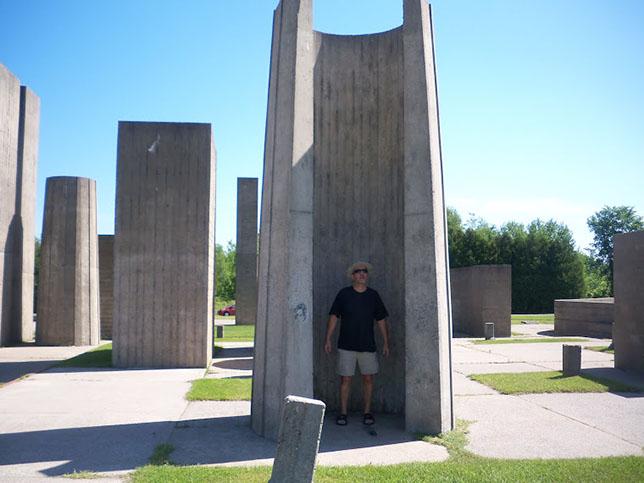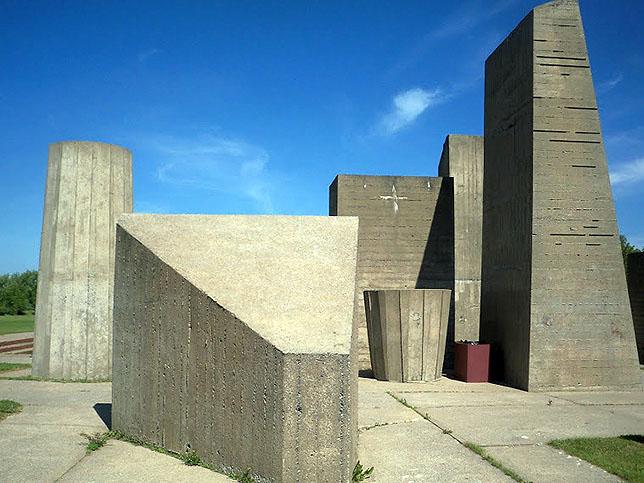


In the denuded landscape of the bank, against the backdrop of the row of trees that underlines the roadway, the monument stands in visual connection with the canal and the dam. It is made up of 18 giant monoliths erected to the dead of the Battle of Long-Sault fought by Adam Dollard des Ormeaux, his 16 companions and around fifty First Nations allies against 600 to 800 Iroquois warriors in May 1660. Volumes in raw concrete formwork, of various geometric shapes and sizes, represent those who sacrificed their lives for the defense of New France. They are grouped facing the one representing the chief emerging from the basin, backfilled (one of the monoliths housed the water filtration system), located at the head of the whole; large stelae, the tallest, exceeding eight meters, punctuate a ground layout with a rectilinear layout that stretches towards the bank and alternates grassy beds and concrete paved surfaces. Access to the inhabitable sculpture is via two flights of stairs and a ramp from the parking lot that extends to the west, inviting visitors to enter it in order to wander and rest there. To the east, it is circumscribed by a low wall, while a step delimits it to the south and benches on the other sides. A piece of clay shale extracted from the river in 1959, during the construction of the dam, marks the entrance and 22 old boundary stones from the canal opened in 1834 randomly punctuate the work.